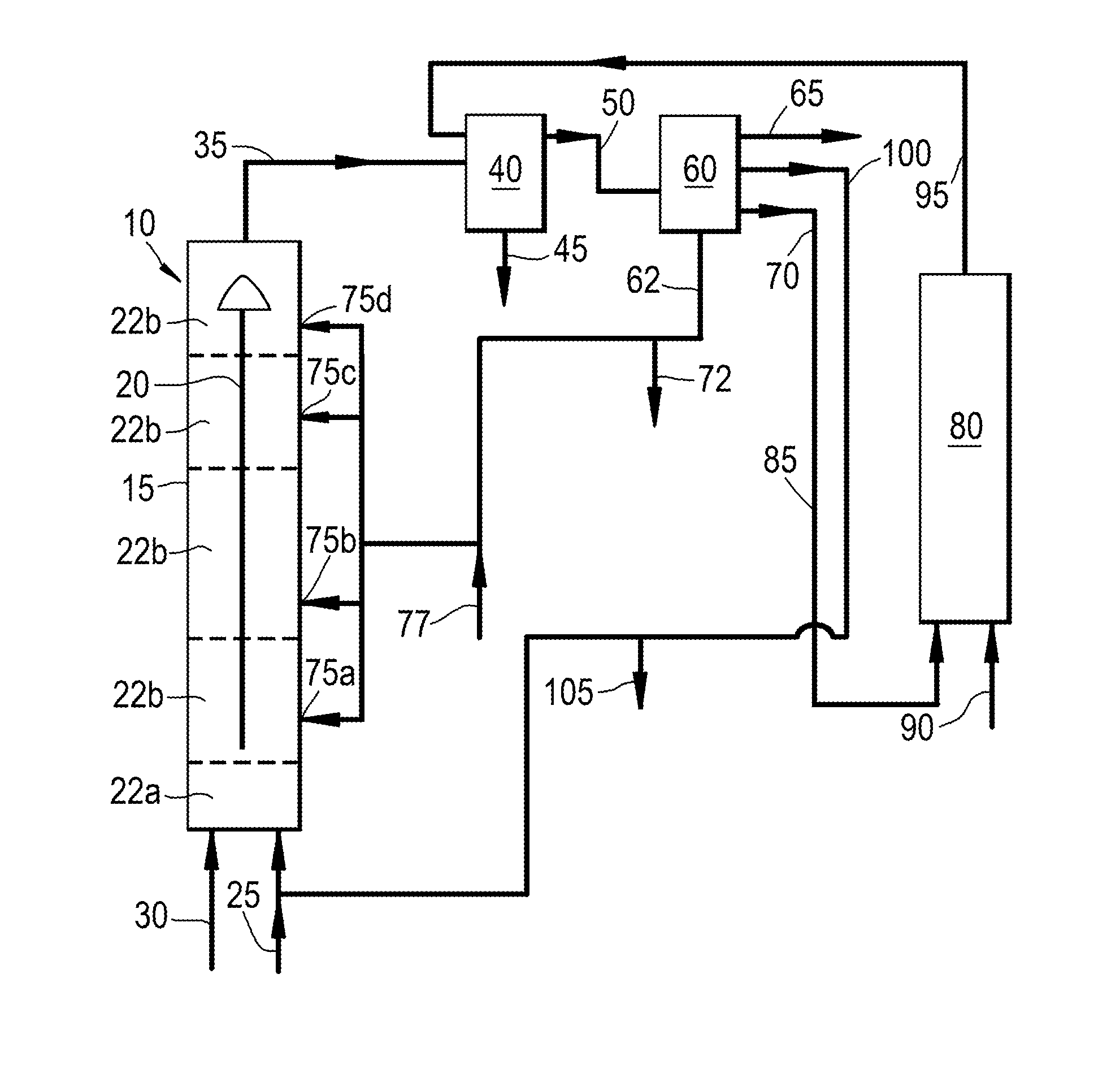Process for preparing ethylene and/or propylene
a technology of ethylene and propylene, which is applied in the field of process for preparing ethylene and/or propylene and a reaction system, can solve the problems of unfavorable temperature increase and valuable heat loss as it is withdrawn from the process, and achieves the effects of reducing the deactivation of the catalyst due to the exposure of the catalyst to high temperatures, less coke making, and beneficial to the selectivity of the process
- Summary
- Abstract
- Description
- Claims
- Application Information
AI Technical Summary
Benefits of technology
Problems solved by technology
Method used
Image
Examples
examples
[0105]The invention is illustrated by the following non-limiting calculated examples.
[0106]Tables 1 and 2 show the required amount (mol) of C5 olefin per mol of methanol converted that needs to be admitted to the process in order to operate the process isothermally, i.e. where zeolite-comprising catalyst is provided to the riser reactor at a first temperature and reactor effluent, comprising zeolite-comprising catalyst, is retrieved from the riser reactor at a second temperature and sufficient C5 olefins are admitted to the reactor to maintain a temperature difference between the first and second temperature that is zero. The calculations are based on the heat of formation (ΔHf(T) (kJ / mol)) and ratio of ethylene to propylene in the reactor effluent. It is assumed that the only reactants are methanol and 1-pentene, which are converted as following:
MeOH->H2O+nC2H4+mC3H6 (1a)
C5H10->C2H4+C3H6 (1b)
3m+2n=1 (1c)
(0≦m≦⅓) (1d)
[0107]The only products formed are ethylene, propylene and wate...
PUM
| Property | Measurement | Unit |
|---|---|---|
| temperature | aaaaa | aaaaa |
| temperature | aaaaa | aaaaa |
| temperature | aaaaa | aaaaa |
Abstract
Description
Claims
Application Information
 Login to View More
Login to View More - R&D
- Intellectual Property
- Life Sciences
- Materials
- Tech Scout
- Unparalleled Data Quality
- Higher Quality Content
- 60% Fewer Hallucinations
Browse by: Latest US Patents, China's latest patents, Technical Efficacy Thesaurus, Application Domain, Technology Topic, Popular Technical Reports.
© 2025 PatSnap. All rights reserved.Legal|Privacy policy|Modern Slavery Act Transparency Statement|Sitemap|About US| Contact US: help@patsnap.com


